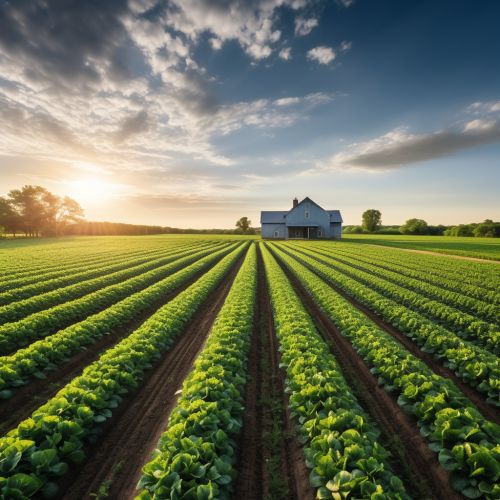Agricultural policy of the United States
Overview
The Agricultural policy of the United States is a complex and multifaceted area of public policy that deals with a variety of issues related to agriculture in the United States. These policies are formulated by the federal government and are implemented through a number of different federal agencies, most notably the United States Department of Agriculture (USDA).


History
The history of agricultural policy in the United States can be traced back to the early days of the republic, when the government's role in agriculture was primarily limited to the distribution of public lands for farming. The Homestead Act of 1862, for example, provided 160 acres of public land to settlers for a small fee, provided they improve the land by building a dwelling and growing crops.
Evolution of Policy
Over the years, the agricultural policy of the United States has evolved and expanded in response to changing economic, social, and environmental conditions. In the early 20th century, for example, the government began to play a more active role in supporting farmers and stabilizing agricultural markets through price supports and other measures. This was largely in response to the economic hardships faced by farmers during the Great Depression.
Current Policies
Today, the agricultural policy of the United States encompasses a wide range of issues, including farm income support, agricultural research and education, food safety, animal and plant health, and conservation and environmental protection. These policies are implemented through a variety of programs and initiatives, many of which are authorized and funded through the Farm Bill, a major piece of legislation that is typically reauthorized every five years.
Criticisms and Controversies
Despite its many benefits, the agricultural policy of the United States has also been the subject of numerous criticisms and controversies. Critics argue that the current system of farm subsidies disproportionately benefits large, corporate farms at the expense of small, family-owned farms. Others point to the environmental impacts of intensive farming practices, which are often encouraged by current policies.
Future Directions
Looking ahead, the future of agricultural policy in the United States is likely to be shaped by a number of key trends and challenges. These include the ongoing impacts of climate change, the growing demand for sustainable and organic farming practices, and the need to ensure food security in the face of a growing global population.
